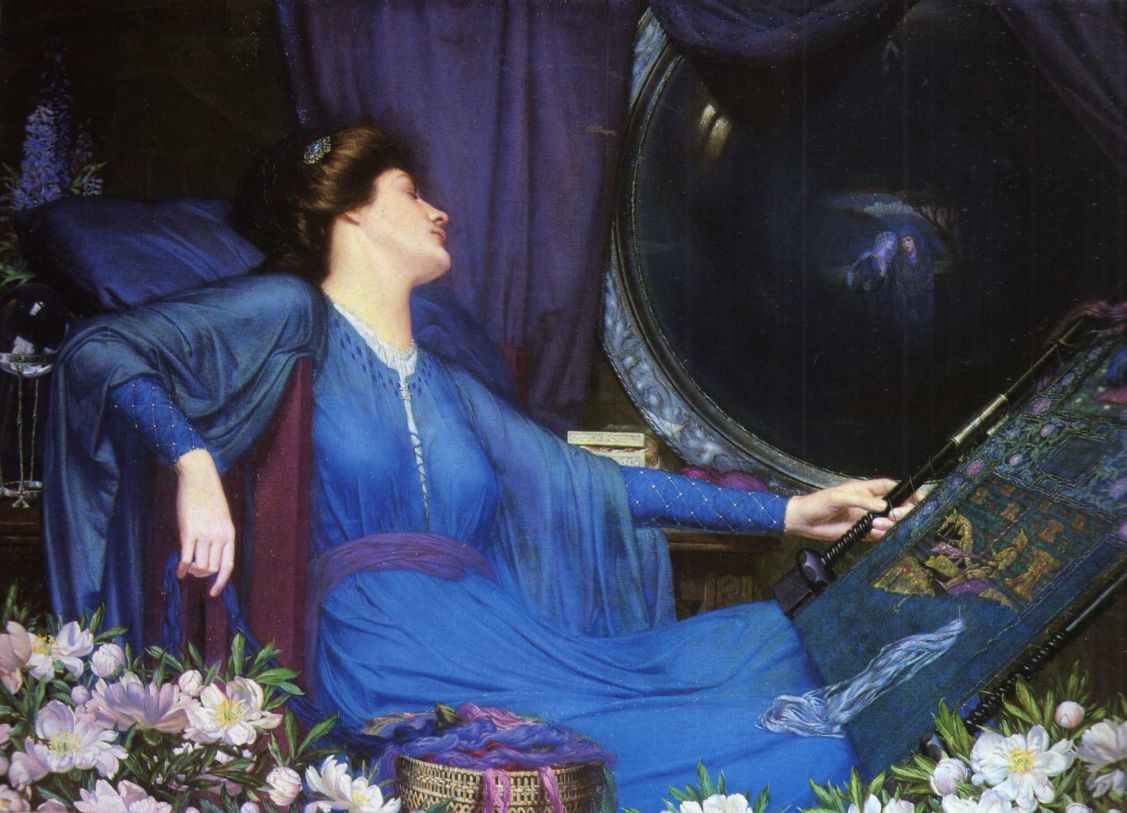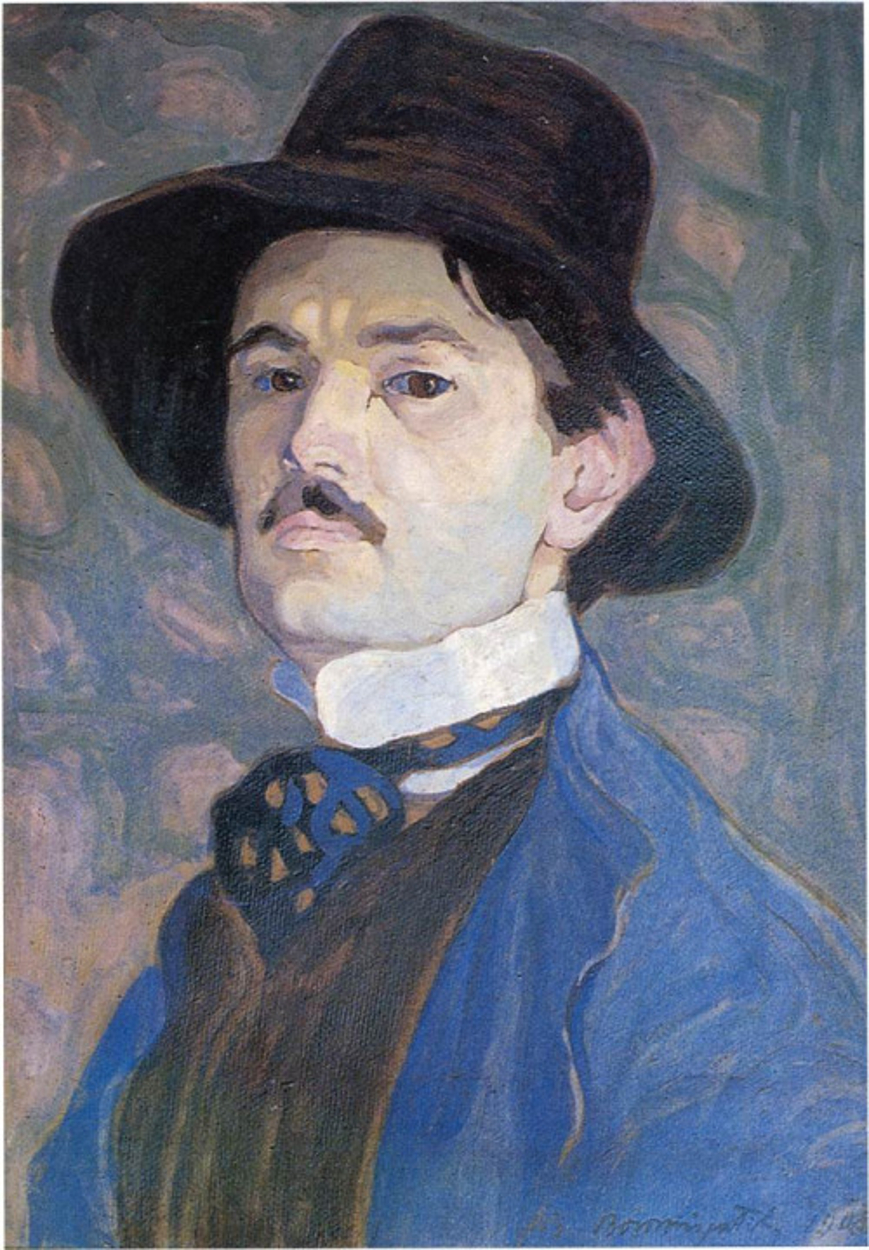Tennyson's poem of The Lady of Shalott relates the story of a woman cursed to remain inside a tower on Shalott, an island situated in the river which flows to Camelot. No others know of her existence, as her curse forbids her to leave the tower or to even look outside its windows. Instead, a large mirror within her chamber reflects the outside world, and she weaves a tapestry illustrating its wonders by means of the mirror's reflection. As the poem progresses, the Lady becomes increasingly aware of the love which abounds in the outside world, and she tires of her lonely existence in her tower, saying she is "half sick of shadows". Then seeing Sir Lancelot riding down to Camelot, the Lady leaves her loom to look down on him directly from her window, which immediately fulfills the curse. Her tapestry begins to unravel and the mirror cracks as she recognizes the consequences of her impulsive action. She flees her tower and finds a boat in the river which she marks with her name and loosens from its moorings. She dies before her boat reaches Camelot, where she would have finally found life and love, and Lancelot muses over the beauty of this unknown woman when the inhabitants find her body. The tragic love illustrated by Tennyson's poem appealed to the Pre-Raphaelites and their followers as one of the themes they favored most, and over fifty depictions of her story exist from the latter half of the nineteenth-century and the beginning of the twentieth.




I am half sick of shadows said The Lady of Shalott
oil on canvas • 30 x 45 inches
 Sidney Harold Meteyard
Sidney Harold Meteyard